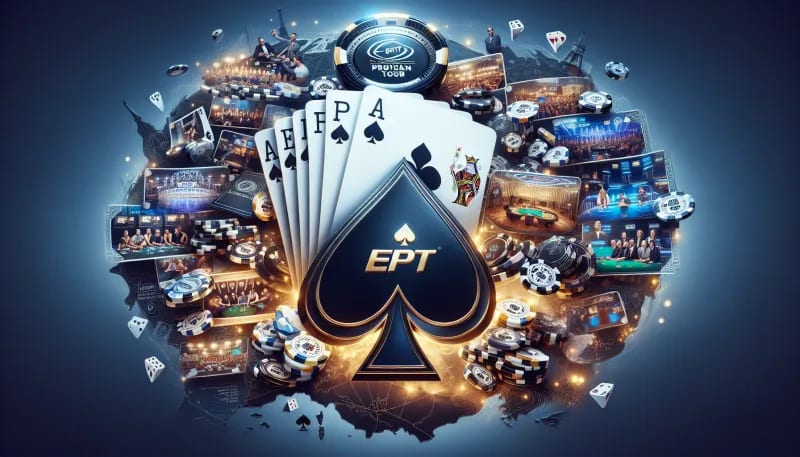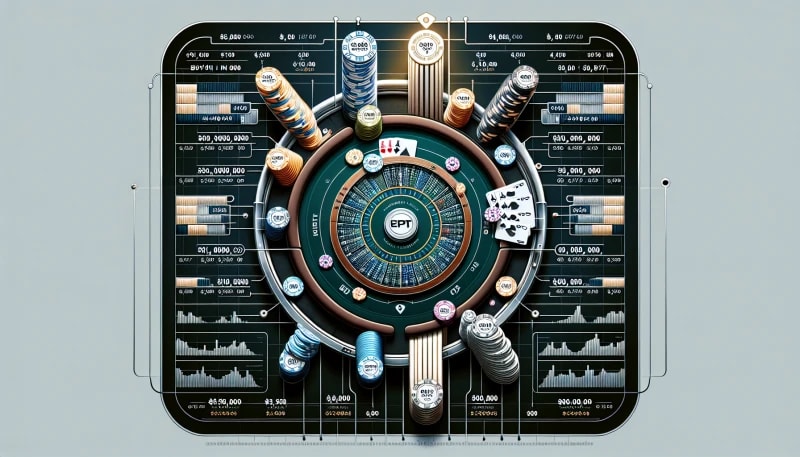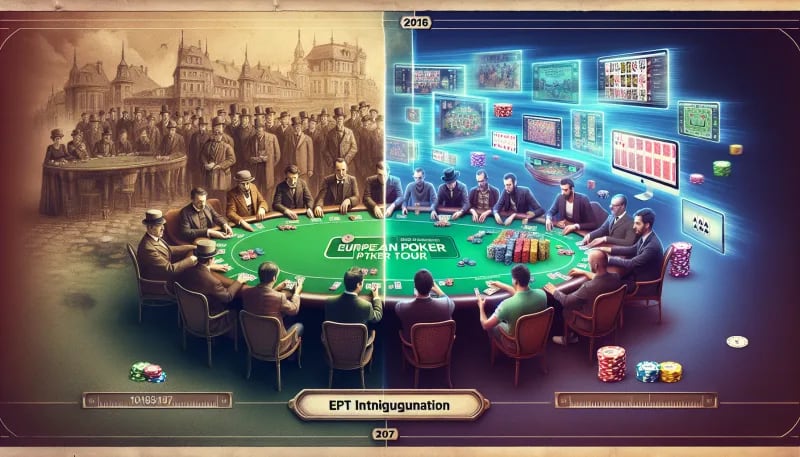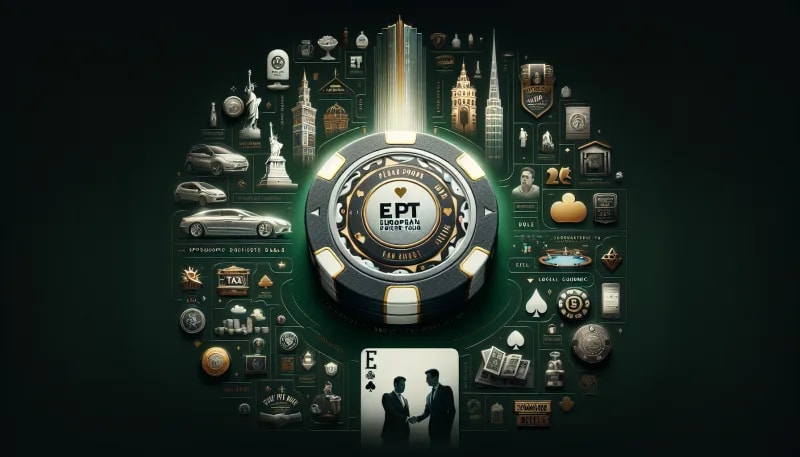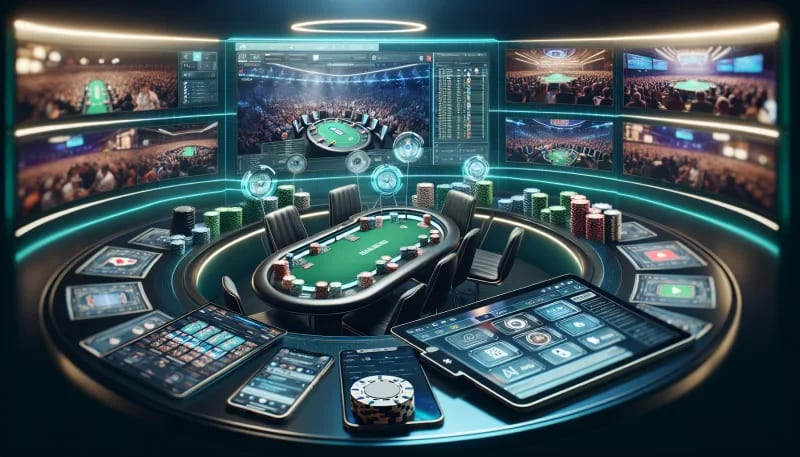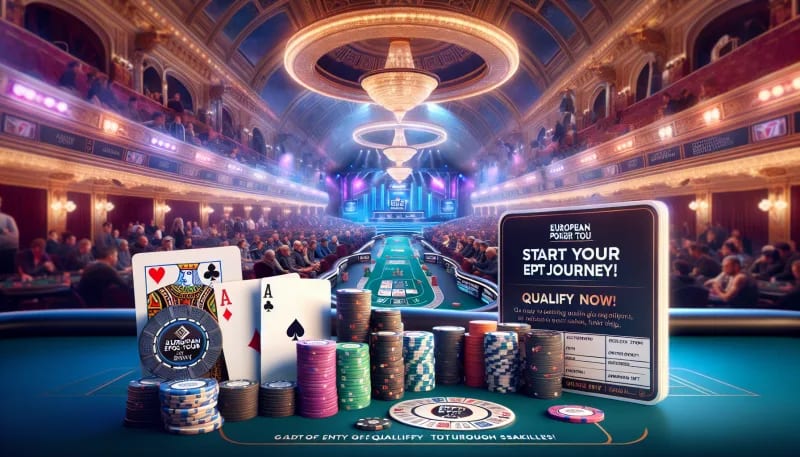EPT Poker: A Comprehensive Introduction to the European Poker Tour
Introduction to the European Poker Tour (EPT)
Ever wondered where high-stakes drama and world-class skill meet in European poker? Look no further than the European Poker Tour (EPT), the continent’s richest and most popular poker circuit. Since its inception in 2004, the EPT has grown into a colossal series that draws in pros and amateurs alike, all eager to etch their names into poker history.
Imagine a poker tour so prestigious that winning a single event can define a player’s career. That’s the EPT for you. John Duthie, a former poker player himself, created this tour to offer a European counterpart to the World Poker Tour (WPT). It quickly began to set the standard for poker excellence in Europe. With its luxurious venues and eye-watering prize pools, who wouldn't want to battle it out on the EPT felts?
Growth, you ask? The numbers speak volumes. From a handful of stops and modest beginnings, the EPT expanded, making millionaires at stops from Barcelona to Monte Carlo. PokerStars, once a fledgling company, took over the reins, injecting even more life into the tour. The partnership with PokerStars was a game-changer, bolstering the EPT’s schedule and prizes.
Major milestones? There are plenty. Such as when Victoria Coren Mitchell made poker history in 2006, becoming the first-ever two-time EPT Main Event winner. Or the record-smashing EPT Barcelona events that continually raise the bar for entries. Each moment etched into the EPT's rich history signifies its status as a globetier poker showcase.
And prestige? The EPT is a titan of the poker world, revered for its competitive field and professional atmosphere. Winning here isn’t just about the payday; it’s about the respect, the glory, and the legacy. Truly, it's a feat every serious player aims for.
As we conclude this introduction, are you starting to feel the allure of the EPT? Its significance in the poker arena simply can't be overstated. Now that we’ve inked out the broad strokes of the EPT’s grandeur, let's anticipate the next hand. Stay tuned as we delve into "The Structure of EPT Tournaments" – a critical aspect that shapes the battle for poker supremacy.
The Structure of EPT Tournaments
So, how exactly are EPT events put together? Let's dive right in. The European Poker Tour (EPT) offers a range of tournaments that cater to different levels of players. Buy-ins? They can vary widely! For regular EPT events, buy-ins range from a couple of grand to about €5,000. Pocket change for some, I'm sure.
But, wait! What if you're looking to really compete with the big guns? That's where High Roller events come into play. These are for the players who eat, sleep, and breathe poker. High Roller and Super High Roller events feature buy-ins from €25,000 all the way up to impressive €100,000. Getting a seat at one of these tables isn't for the faint of heart, or wallet.
Blind structures are a whole other ball game. They're designed to provide a good amount of play at every level. In regular EPT events, blinds usually start low and increase at a pace that allows for strategic play without rushing the action too much. This means you won't get blindsided early on...unless your poker face isn't up to scratch.
And what about those High Rollers again? Their blinds follow a similar incremental pattern, but often feature deeper starting stacks and longer levels. This translates into a more profound test of skill and endurance. After all, when the stakes are sky-high, shouldn’t you have the time to make those critical decisions?
Intrigued? Well, just wait until you hear about the legends who have conquered these structures. Their stories of triumph could be books in their own right. But, that's a tale for the next section. For now, just imagine the skills it takes to rise above the crowd in such a diverse field. Could you be the next champion to join the ranks of poker royalty?
Famous EPT Champions and Record Breakers
Transitioning from the meticulous structure of EPT tournaments, we now turn the spotlight to the players who've etched their names into the poker hall of fame. Let's talk about the legends, the mavericks, the record breakers.
Have you ever heard of Steve O'Dwyer? He's a force to be reckoned with. Known for his aggressive yet calculated playing style, O'Dwyer claimed the EPT Monte Carlo title in 2013. But it's not just the title that makes him notable. His consistent performance across EPT events has raked in winnings that defy gravity.
Then there's Victoria Coren Mitchell – double trouble, if you will. Why? She's the first player to ever win two EPT Main Event titles, Monte Carlo in 2006 and Sanremo in 2014. A player of poise and intellect, Coren Mitchell's finesse in both her cards and her character make her victories even more compelling.
Let's not forget John Juanda, an Indonesian-born American player, who after years at the tables, deservedly captured the EPT Barcelona title in 2015. His patience and resilience reflect a master at work, a man who reads the table like a book. His Barcelona triumph was a blend of experience meeting opportunity at the perfect moment.
And how could we omit the young prodigy, Adrian Mateos? Bursting onto the scene, this Spanish sensation became the youngest player to win three bracelets by 22. Champion of the 2015 EPT Grand Final in Monte Carlo, Mateos showcased a playstyle both fearless and strategic, signaling a rising star in the poker galaxy.
Each story is a chapter in the EPT saga. It's these players, among others, who set the bar and break the records. Can you imagine the dedication it takes to reach these heights? Indeed, it's the champions like these that lay the groundwork for The Evolution of EPT Over the Years – the chronicle of endurance and evolution that follows.
The Evolution of EPT Over the Years
Building on the legacies of famous EPT champions, the European Poker Tour (EPT) has not just been a stage for remarkable players, but a dynamic landscape that reflects the pulse of the poker world. Isn't it fascinating to look back and see how a series adapts to the ever-changing demands of its audience?
From the start, it was clear that the EPT was onto something big. But even the perfect hand can improve, right? Format changes were among the early developments. We saw adjustments in starting stacks and blind structures, all in response to player feedback. The goal was simple: enhance the quality of play and provide a comfortable pace. Each tweak meant a more nuanced and engaging experience for grinders at the felt.
New events, you ask? The EPT introduced the High Roller and Super High Roller tournaments, catering to a burgeoning market of players hungry for high-stakes action. These additions weren't just a nod to the elite. They offered a spectacle, drawing crowds and creating a buzz that transcended poker circles.
But let's talk about adaptation, the survival skill in the poker ecosystem. When online play became a titan in the industry, EPT embraced the shift. Virtual felt became as important as the physical tables, with the emergence of EPT Online. This move was more than innovative—it was essential. It ensured that when live poker hit unavoidable snags, like during the recent pandemic, the EPT's heartbeat continued online.
Adapt or get left behind, correct? EPT's foray into online realms demonstrated resilience and foresight, securing its place in a digital future without forsaking the unmistakable allure of live play.
And as we slide our chips into the pot of discussion about the EPT's impact on the poker economy, it's clear this evolution has been more than a series of changes. It's a strategic response to the global appeal of poker. Every decision, every adaptation has contributed to an economic effect that echoes across casinos and computer screens alike.
EPT's Impact on the Poker Economy
Continuing from the evolution of EPT, it's clear the tour didn't just transform competitive play. It revolutionized poker's economic landscape too. But how exactly has the EPT fueled economic growth? Well, let's deal into it.
EPT stops are like magnets for poker enthusiasts. They attract players from across the globe, generating a tourism boom. Hotels, restaurants, and local businesses thrive as players and fans flock to host cities. It's not just about the tables; it's about the entire city coming alive.
Next, think sponsorships. The EPT's growth has seen big brands ante up for a piece of the action. From online poker sites to luxury watchmakers, sponsorship deals inject serious cash into the events. These partnerships don't just benefit players with added prizes; they're a win-win for companies seeking exposure and the tour's financial growth.
And let's not forget the poker celebrities. The EPT has a knack for turning skilled players into stars. Cameras, interviews, and the coveted titles help craft their stories. These stories captivate audiences and inspire waves of new players. Each new star is reminds us: Anyone could be next.
So, as you think about strategies for competing in EPT events, consider the bigger picture. Each EPT tournament is more than a chance at glory. It's a catalyst for economic activity, a spotlight for emerging talent, and an opportunity for businesses to shine.
In the next part, we’ll shuffle up the strategy deck. But remember, whether you're aiming to bluff your way to victory or simply soaking in the EPT experience, you're part of something much bigger. A community that not only loves the game but also fuels economies with every flop, turn, and river.
Strategies for Competing in EPT Events
So, we've seen the impressive impact EPT has on poker's economy. But how do you stand a chance against the crème de la crème in these high-stake tournaments? It's not just luck. Let me tell you, it takes some serious strategy and prep.
Know the field. You're playing against the best. I make it my job to understand who's who at the table. Who bluffs? Who's tight? A bit of homework on opponents can turn the tide.
Table dynamics are key. Let's not forget, EPT events are no sprint; they're a marathon. Long levels and deep stacks mean patience is more than a virtue—it's your lifeline.
Mix up your play. Predictability is your enemy. I constantly switch gears to keep my opponents guessing. They shouldn't know if I'm holding a monster or just bluffing with air.
Money management? Absolutely crucial. Each chip is precious, and I protect my stack like a dragon guards treasure. Blowing your bankroll early? That's a no-go.
And here's a thought: Why not satellite in? EPT buy-ins are steep. I'd often earn my seat through cheaper qualifiers, saving precious bankroll for the battles ahead.
Embrace the structure. The unique EPT format—with its gradual blinds increase and generous playtime—allows for real poker to unfold. I revel in that, using the extra room to maneuver strategically.
As we get ready to explore the Role of Technology in Shaping EPT in the next section, I can't help but think about how tech has informed my own approach. I use tools to analyze hands, refine strategies, and stay sharp. Can't ignore that angle, right?
In essence, success at EPT takes a mixture of deep game understanding, psychological savvy, and strategic flexibility. I always keep these in mind, because in the end, every decision you make is a brushstroke in the larger picture of your EPT masterpiece.
The Role of Technology in Shaping EPT
In previous sections, we talked about the array of strategies that can give you the edge in EPT events. But how has the technological revolution played its part in the evolution of the European Poker Tour (EPT)? Let’s delve into that.
Online satellites are undoubtedly the first seismic shift attributed to tech advancements. Think about it. Where would the EPT be without the ability to plug into a global grid and qualify from the comfort of your home? These virtual qualifiers have opened doors for amateur players worldwide. They've democratized the playing field, offering chances to those who might have never been able to travel to a live event otherwise. Can you imagine the thrill of turning a small online buy-in into a seat at a prestigious EPT event?
Live streaming is another game-changer. It has taken the viewer experience from zero to hero by allowing fans to watch real-time action. Audiences can now learn and entertain themselves watching their favorite pros make audacious bluffs or call down with fifth pair. Isn't it just like standing on the rail of the feature table with the best view in the house?
Tech hasn’t just stopped at participation and spectating. Enhanced player participation translates to growing prize pools and fiercer competition, bolstering the EPT’s prestige. The streaming technology used has evolved, too, incorporating multiple camera angles, RFID tables for instant hand information, and slick graphics for a better understanding. These developments have enriched the storytelling aspect, making poker not just a game but a compelling narrative to follow.
What’s more, interaction with the audience has surged. Social media platforms and live chats during streams allow you to engage with commentators, providing a two-way street of communication unheard of in the early days of EPT.
As we connect the dots between mastering strategies in EPT and actually getting involved, it's clear that technology acts as both facilitator and enhancer. Do you see yourself leveraging these tech tools to secure your seat at the next big EPT event? Stay tuned, as we're about to explore exactly how to get involved in the EPT next.
How to Get Involved in EPT
Transitioning from discussing the Role of Technology in Shaping EPT, it's key to understand how it has also simplified joining the European Poker Tour (EPT). Let's dive into how you can snag a seat at these prestigious tables.
Ever thought about playing amongst the poker elite in locations like Monte Carlo or Barcelona? It's more achievable than you might think. First up, satellite tournaments. These are your golden ticket. They're lower-stakes tournaments offering the chance to win a seat at a higher-stakes event. EPT often runs satellites online, and thanks to the advancement in poker technology, finding them is a breeze.
Get this: EPT satellites can even start at less than a dollar. It's a stairway from micro-stakes to the big time! Playing satellites requires a strategic approach. Know when to hold tight and when to make your move. The goal isn't to win the most chips; it's to secure a seat.
Not a fan of climbing the satellite ladder? Understandable. You can do a direct buy-in. Sure, it’s pricier, but it's a straight shot to the action. Go to the EPT website, select your event, and purchase your entry. Voila, you're in! Just make sure you have the bankroll to back it.
Speaking of bankroll, let’s talk about bankroll management. It's the cornerstone of poker success. Ever heard the phrase "don't put all your eggs in one basket"? Hold onto that thought. Never buy into a game with money you can't afford to lose. Be smart. Setting limits protects you from a bad turn of the cards jeopardizing your ability to play again.
Now, ask yourself, how much can you comfortable invest? If direct buy-ins are a stretch, satellites are your best bet. Either way, manage your bankroll wisely. Remember, EPT is a marathon, not a sprint. Ready to take your seat at the table? Take a shot at qualifying, and who knows, I might just see you there.

